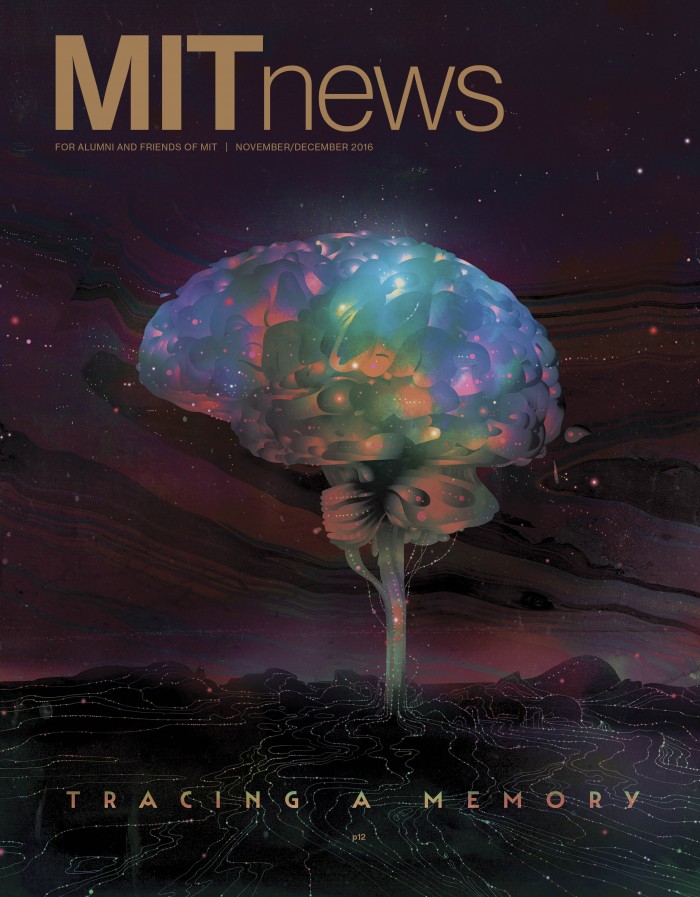Letters
A Modern-Day Nobel
Much lore surrounds Alfred Nobel, the inventor of dynamite. The Nobel Prize’s origin story is repeated so often that it may actually be true. It alleges that, while in Paris in 1888, Nobel read an obituary purporting to be his. “Le marchand de la mort est mort” (“The merchant of death is dead”), it read. The very-much-alive Alfred, whose older brother, Ludvig, had recently died, was being held responsible for the most deaths in history! Despite being shocked and offended, Nobel realized he’d been given the same gift received by Ebenezer Scrooge: a brush with death, leading to rebirth and redemption. Nobel’s will, endowed by his “remaining realizable estate” at the time of his death, contains his vision: to award monetary prizes to scientists who have “conferred the greatest benefit on mankind.”
Jim Simons (“The Polymath Philanthropist,” November/December 2016) is a modern-day Nobel: inventor, scientist, and philanthropist. Thankfully, Jim is very much alive. And unlike Nobel, he has chosen to give away much of his “realizable estate” during his lifetime. Not for research by single individuals, as Nobel’s will specified, but rather to teams working on long-term, high-risk, high-reward science with true breakthrough potential.
Jim and his trusty sidekick (and boss) Marilyn Simons, president of the Simons Foundation, aren’t spectators in the quest for human knowledge; they participate in nearly all of the foundation’s activities, from the grant process to attending workshops. Jim is intellectually peripatetic but capable of deep dives into topics ranging from superconducting bolometers—which I use in my research to observe the cosmic microwave background—to the role de novo mutations play in autism. The International Astronomical Union found the perfect answer to the question “What do you get the man who has everything?” Asteroid 6618 “Jimsimons” is a gift that forevermore celebrates a man with truly cosmic vision.

Brian Keating
Professor of Physics, Center for Astrophysics and Space Sciences
University of California, San Diego
Undergrads in the Practice School
The November/December 2016 article “Diving In” was all about the Chemical Engineering Practice School for graduate students. In the past, the school was open to undergraduates. In 1958, I was a BS graduate in chemical engineering practice. I was at Hercules Powder Company in Parlin, New Jersey, and Bethlehem Steel Company in Lackawanna, New York. I don’t know why the undergraduate program was terminated. It was very valuable for me.
Jack Shelton ’58
Littleton, Colorado
A Code-Teaching Robot
it was a pleasure to read the recent feature on Radhika Nagpal (“Robo Swarm,” September/October 2016). I first met Radhika in the Amorphous Computing group in 1999, when she was a senior grad student and I’d just arrived at MIT for grad school, and I’ve had the great fortune of working closely with her over the last dozen years.
While my own first love, like Radhika’s, is in collective behavior and complex systems, I wanted to mention another project we’ve been working on that’s very different from those described in the article. It’s a robot designed for education, to help bring STEM and coding to any class from kindergarten on up, as well as to homes. The robot, dubbed Root, lives on whiteboards: it drives vertically (using magnets), draws and erases, and responds to what users draw on the board. This agent-centered drawing harks back to the classic Logo and its origins at MIT nearly 50 years ago; it promotes computational thinking and integrates art into technical activities. The whiteboard environment is directly suited to the infrastructure already in classrooms, and the robot helps bring abstract computing concepts into the real world. It’s strikingly compelling to see the robot driving on the wall, and to interact with it just by drawing—for instance, to create a track for a racing game or walls for a maze-solving activity.
Along with the robot, we’ve developed a programming interface that supports the learner’s trajectory from beginner to advanced. It starts with a simple blocks-based interface that can be used by pre-reading students, takes them all the way to text-based languages like Python and JavaScript, and automatically translates programs written at one level to the next to help with the transitions.
Thanks to the work of a truly exceptional team, the robot has gone from an early lab prototype to the point where it is ready to make a major impact and is already being used in schools.
Interested readers can find out more at http://codewithroot.com/.
Justin Werfel, SM ’01, PhD ’06
Cambridge, Massachusetts
Tell us what you think
E-mail mitnews@technologyreview.com
Write MIT News, One Main Street, 13th Floor, Cambridge, MA, 02142
Keep Reading
Most Popular
Large language models can do jaw-dropping things. But nobody knows exactly why.
And that's a problem. Figuring it out is one of the biggest scientific puzzles of our time and a crucial step towards controlling more powerful future models.
The problem with plug-in hybrids? Their drivers.
Plug-in hybrids are often sold as a transition to EVs, but new data from Europe shows we’re still underestimating the emissions they produce.
Google DeepMind’s new generative model makes Super Mario–like games from scratch
Genie learns how to control games by watching hours and hours of video. It could help train next-gen robots too.
How scientists traced a mysterious covid case back to six toilets
When wastewater surveillance turns into a hunt for a single infected individual, the ethics get tricky.
Stay connected
Get the latest updates from
MIT Technology Review
Discover special offers, top stories, upcoming events, and more.